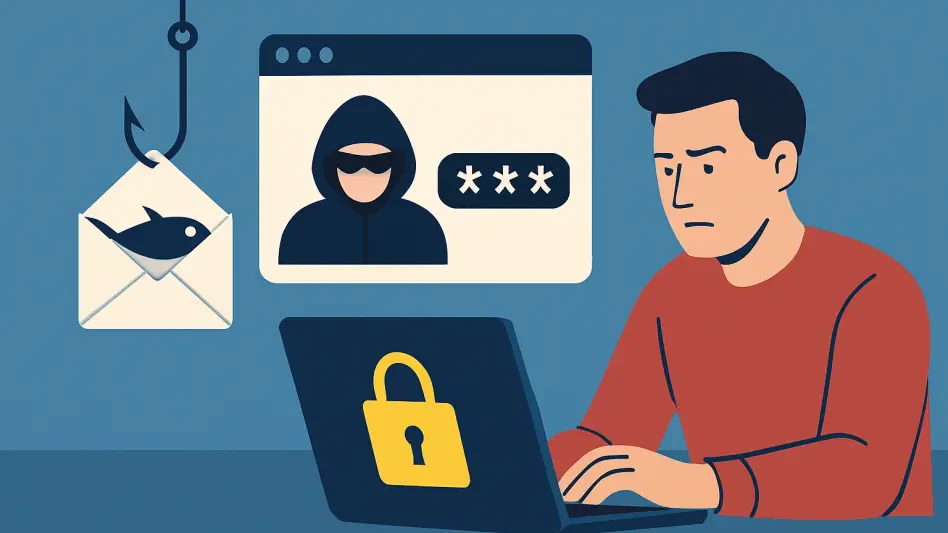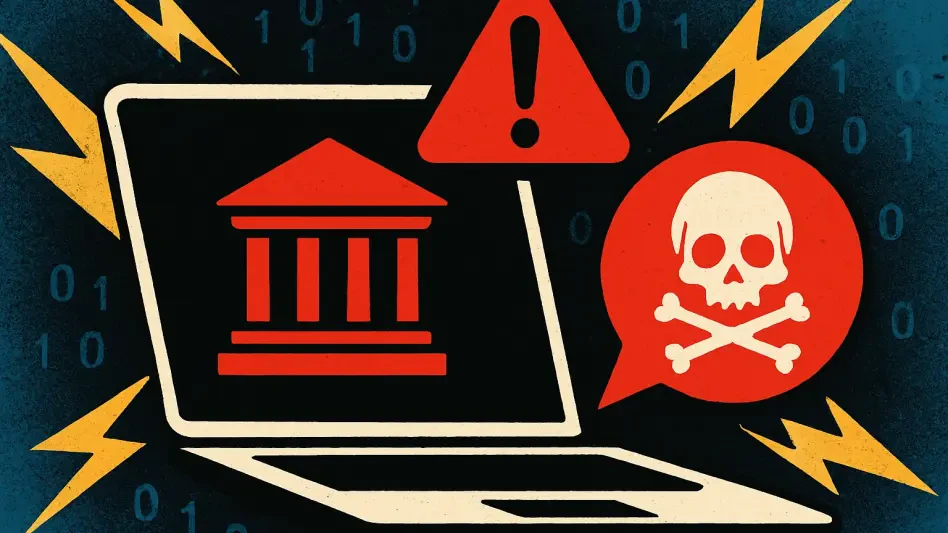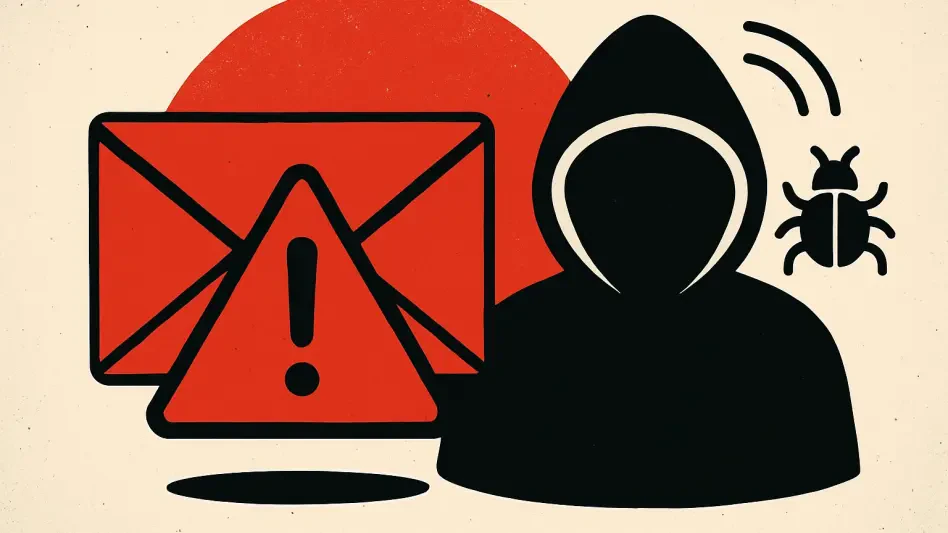In an era where digital trust is paramount, cybercriminals have found a cunning way to exploit familiar names, turning well-known brands into weapons of deception in sophisticated phishing campaigns. A recent wave of attacks targeting organizations across Central and Eastern Europe, particularly in countries like the Czech Republic, Slovakia, Hungary, and Germany, showcases how attackers leverage the credibility of global giants such as Microsoft 365, Adobe, and FedEx to harvest login credentials. These schemes go beyond simple email scams, employing advanced tactics like self-contained HTML attachments that mimic legitimate login pages with startling accuracy. By bypassing traditional security measures and exploiting human trust in recognized logos, these phishing efforts pose a significant threat to industries ranging from agriculture to education. The audacity and innovation behind these attacks raise critical questions about the evolving landscape of cybersecurity and the urgent need for robust defenses.
Unveiling the Tactics of Brand Impersonation
The ingenuity of modern phishing attacks lies in their ability to replicate the look and feel of trusted brands, creating a false sense of security for unsuspecting users. Cybercriminals craft emails that appear to come from reputable companies, often posing as customers or partners requesting urgent actions like invoice confirmations or quotations. These messages are tailored to specific industries, with filenames such as RFQ_4460-INQUIRY.HTML designed to resonate with regional business practices in targeted areas. Once opened, the attached HTML files display fake login pages that mirror the branding of legitimate entities, complete with subtle design elements for added authenticity. This meticulous attention to detail tricks users into entering sensitive information, believing they are interacting with a familiar and trusted platform. The regional focus and industry-specific customization demonstrate a deep understanding of victim behavior, making these attacks alarmingly effective against even cautious individuals.
Beyond visual deception, the technical sophistication of these phishing campaigns sets them apart from traditional scams. Instead of relying on external servers or suspicious URLs, attackers embed self-contained HTML files in email attachments, evading conventional email security filters. These files use embedded JavaScript to capture credentials and transmit them to attacker-controlled channels, often through platforms like Telegram bots via the Telegram Bot API. This method avoids typical network security alerts by sidestepping traditional command-and-control servers, ensuring operational resilience. Security analysts have noted that such tactics reflect a calculated shift toward decentralized infrastructure, making detection and mitigation far more challenging. The combination of brand impersonation and innovative delivery mechanisms underscores the growing complexity of phishing threats in today’s digital environment.
Exploring Technical Variants and Evasion Strategies
A closer examination of these phishing campaigns reveals two distinct technical approaches that cybercriminals employ to maximize their impact. The first variant uses CryptoJS AES encryption to obscure captured data, including email addresses, passwords, IP addresses, and user-agent details, before redirecting victims to legitimate company websites to avoid suspicion. This redirection tactic creates an illusion of normalcy, as users are unaware their information has been compromised. The encrypted data transmission adds an additional layer of protection for attackers, complicating efforts to intercept or analyze the stolen information. Such methods highlight how perpetrators adapt to counter existing security measures, ensuring their malicious activities remain hidden from both victims and defenders. This variant’s focus on seamless integration with legitimate processes makes it particularly insidious for organizations lacking advanced threat detection capabilities.
The second technical variant takes evasion to another level by incorporating anti-forensics techniques designed to thwart investigation. Features like disabling keyboard shortcuts and right-click menus prevent users from inspecting the underlying code of fake login pages, while the use of the Fetch API ensures cleaner execution without external dependencies. Harvested data is sent via HTTPS to Telegram endpoints with hardcoded bot tokens and chat IDs, minimizing suspicious network patterns that might trigger alerts. This decentralized approach not only enhances the attack’s stealth but also complicates efforts to trace the perpetrators. The strategic use of such advanced methods indicates a high level of technical expertise, as attackers continuously refine their tactics to stay ahead of evolving cybersecurity defenses. This relentless innovation poses a formidable challenge for security teams tasked with protecting sensitive data.
Strengthening Defenses Against Evolving Threats
As phishing attacks grow more sophisticated, the need for enhanced security measures has never been more critical. Organizations must adopt a multi-layered approach, starting with strict controls on HTML attachments and implementing content inspection policies to identify potential threats before they reach end users. Sandboxing suspicious files provides an additional safeguard, allowing for safe analysis of potentially malicious content. Security teams are also advised to monitor network activity for unusual POST requests to specific domains, which could indicate data exfiltration attempts. These proactive steps, combined with retroactive threat hunts to uncover compromised credentials, form a robust framework for mitigating risks. The emphasis on technological solutions reflects the urgency of adapting to tactics that exploit both human trust and systemic vulnerabilities in corporate environments.
Equally important is the role of employee awareness in combating these deceptive campaigns. Training programs should focus on recognizing phishing indicators, such as urgent requests or unfamiliar file formats, even when they appear to come from trusted brands. Encouraging a culture of skepticism toward unsolicited communications can significantly reduce the likelihood of successful attacks. Beyond individual vigilance, organizations must prioritize ongoing updates to security protocols to address emerging threats. By fostering collaboration between technical defenses and human judgment, businesses can create a resilient barrier against phishing schemes that leverage brand credibility. The combination of education and innovation remains a cornerstone of effective cybersecurity strategies in an era of relentless digital deception.
Reflecting on Past Lessons for Future Security
Looking back, the phishing campaigns targeting Central and Eastern Europe revealed a chilling blend of social engineering and technical prowess that caught many organizations off guard. Attackers capitalized on the trust associated with well-known brands, using meticulously crafted HTML attachments to bypass traditional defenses and harvest credentials with alarming precision. The use of decentralized infrastructure, like Telegram bots, and advanced evasion tactics, such as anti-forensics measures, underscored the adaptability of cybercriminals in evading detection. These past incidents served as a stark reminder of the vulnerabilities inherent in both technology and human behavior, prompting a reevaluation of security priorities. Moving forward, the focus must shift to actionable solutions, including stronger attachment controls, continuous monitoring for suspicious network activity, and comprehensive training to empower employees. By learning from these sophisticated attacks, organizations can build a proactive defense, ensuring they stay ahead of evolving threats in an increasingly complex digital landscape.








